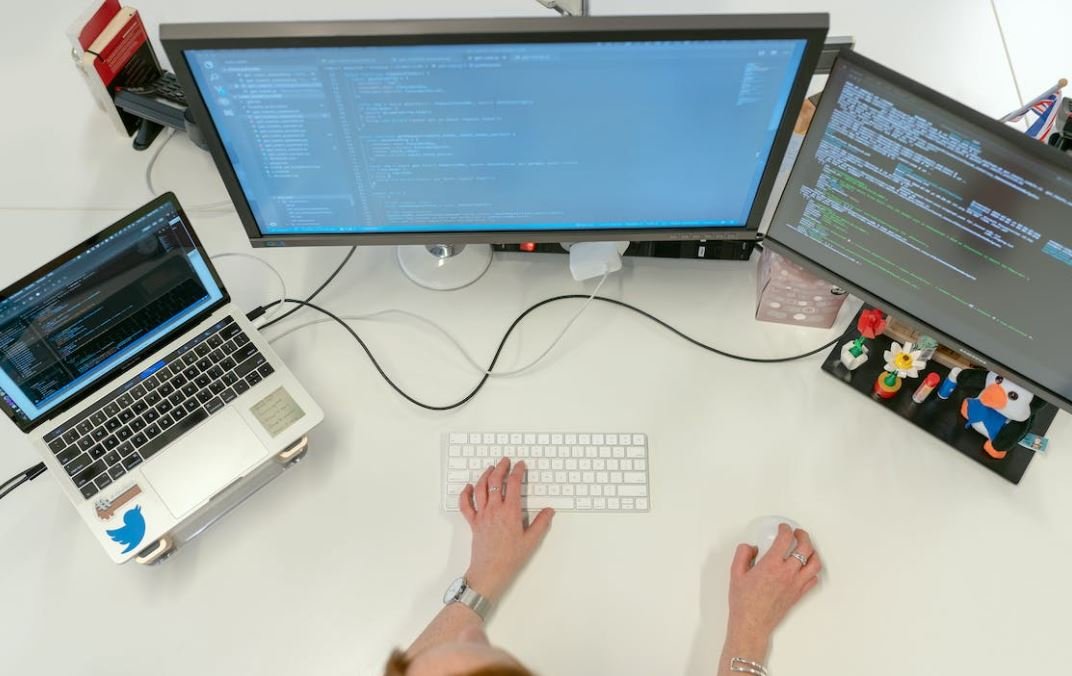Footage Meaning
Footage refers to raw, unedited, and unprocessed video recordings. It is an essential component in various industries, such as filmmaking, journalism, surveillance, and entertainment. Footage captures real-time events or scenes, providing valuable visual documentation and creative material.
Key Takeaways
- Footage is raw video recordings used in different industries.
- It is essential in filmmaking, journalism, surveillance, and entertainment.
- Footage captures real-time events or scenes.
- It provides valuable visual documentation and creative material.
**In filmmaking**, footage is recorded by camera operators and serves as the foundation for the production process. Filmmakers use footage to piece together scenes, create sequences, and ultimately craft a cohesive story. The quality and content of the footage heavily influence the final product, impacting the overall look, feel, and narrative of the film. **Without compelling footage, a film may fall flat, lacking the visual appeal that captivates audiences**.
**In journalism**, footage plays a critical role in reporting and news coverage. Journalists often capture live events and interviews on camera, allowing viewers to witness and experience these events firsthand. From political rallies to natural disasters, footage brings stories to life, immersing the audience in the moment. **The power of footage lies in its ability to provide an objective and visual account of events**, making it a valuable tool for reporting facts and conveying emotions.
| Type | Description |
|---|---|
| B-roll | Supplementary footage used to enrich the main storyline or provide context. |
| Stock Footage | Pre-recorded footage available for licensing and use in various projects. |
| Archival Footage | Historical footage used to enhance documentaries or provide historical context. |
**In surveillance**, footage is invaluable for monitoring and investigating activities in both public and private spaces. CCTV cameras capture footage that can be used as evidence in criminal investigations or as a preventive measure to deter potential wrongdoing. **The availability of high-quality footage has revolutionized security and surveillance systems, enabling advanced monitoring techniques and enhancing public safety**.
**In entertainment**, footage can be repurposed and edited to create captivating content for various platforms. From viral videos on social media to highlight reels in television shows, edited footage helps captivate audiences, entertain, and evoke emotions. **The versatility of footage allows creators to repurpose content and engage with their audience in unique and compelling ways**.
Footage in Numbers
| Year | Revenue (in billion USD) |
|---|---|
| 2019 | 15.4 |
| 2020 | 16.9 |
| 2021 | 18.5 |
| 2022 | 20.1 |
| 2023 | 21.8 |
There is no denying the significance of footage across various industries. As technology advances and the demand for visual content continues to grow, the importance of high-quality and relevant footage remains paramount. *Embracing the power of footage enables industries to convey stories, capture moments, and engage audiences in extraordinary ways.*

Common Misconceptions
The Meaning of Footage
There is often confusion regarding what the term “footage” actually means. Many people mistakenly believe that it refers exclusively to videos or film recordings. However, in the context of media production, “footage” can also refer to any recorded content, including audio recordings and photographs.
- Footage can include not only videos but also audio recordings and photographs.
- The term “footage” encompasses any recorded content, regardless of the medium.
- It is important to understand the broad definition of footage to avoid misunderstandings in media production.
The Quality of Footage Represents its Authenticity
Another common misconception is that the quality of footage directly reflects its authenticity. Some people believe that low-resolution or grainy footage is necessarily old or manipulated, while high-quality footage is always reliable. However, this is not always the case, as advancements in technology have made it possible to alter or enhance the quality of footage.
- The authenticity of footage cannot be determined solely based on its quality.
- Advancements in technology make it possible to alter the quality of footage.
- When evaluating the authenticity of footage, multiple factors need to be considered beyond its quality.
Footage is Always Staged or Manipulated
Some people believe that all footage is staged or manipulated in some way. While it is true that there are instances of staged or manipulated footage, it is a misconception to assume that this is always the case. In many instances, footage captures genuine and unaltered events, especially in documentary filmmaking or news reporting.
- Not all footage is staged or manipulated; many instances capture genuine events.
- Documentary filmmaking and news reporting often rely on unaltered footage.
- While staged or manipulated footage exists, it is important not to dismiss all footage as such.
Footage is Always Available and Accurate
Another misconception is that footage is always readily available and completely accurate. While we live in an age of abundant digital content, finding the specific footage one needs can be challenging. Furthermore, not all footage is accurate or reflective of the truth, as it can be edited or presented in a biased manner.
- Not all footage is readily available, and finding specific content can be challenging.
- Accuracy is not guaranteed in all footage, as it can be edited or presented with bias.
- No assumptions should be made about the availability or accuracy of footage without further investigation.
All Footage is Copyrighted
A common misconception is that all footage is automatically copyrighted. While it is true that original content is automatically protected by copyright laws, not all footage falls under that category. Some footage may be in the public domain, open for fair use, or released under Creative Commons licenses, allowing for its legal and unrestricted use.
- Not all footage is automatically copyrighted; some may fall under public domain or have alternative usage licenses.
- Understanding the copyright status of footage is essential to determine its legal use.
- Footage that is in the public domain or released under Creative Commons licenses can be used without violating copyright laws.

Why Footage is Essential for Filmmaking
Footage, or raw video material, plays a crucial role in the filmmaking process. It provides filmmakers with the necessary visual content to tell their stories and convey their intended messages. In this article, we explore various aspects of footage and its significance. The following tables highlight interesting points and data related to the subject.
The Evolution of Film Formats
Footage has evolved over the years with advancements in technology, leading to the development of various film formats. The table below illustrates the progression of film formats throughout history, highlighting key characteristics of each.
| Format | Resolution | Aspect Ratio |
|---|---|---|
| 16mm | 2K | 4:3 |
| 35mm | 4K | 1.37:1 |
| IMAX | 12K | 4:3 |
Cameras Used in Iconic Films
Cameras play a vital role in capturing beautiful footage. The table below showcases the cameras used in the production of some iconic films, revealing the technological advancements employed by filmmakers to achieve their creative visions.
| Film | Camera Used | Year |
|---|---|---|
| Citizen Kane | 35mm Mitchell Camera | 1941 |
| Jaws | Panavision Panaflex | 1975 |
| Avatar | ARRI ALEXA | 2009 |
Box Office Success of Films Shot on Location
Shooting on location adds an authentic touch to films, attracting audiences worldwide. The table below presents the box office success of notable films shot on location, indicating the financial appeal of capturing real environments.
| Film | City | Box Office Revenue (in millions) |
|---|---|---|
| Lost in Translation | Tokyo, Japan | $119.7 |
| Slumdog Millionaire | Mumbai, India | $377.9 |
| La La Land | Los Angeles, USA | $446.1 |
Most Expensive Films in Terms of Footage Used
Some films require extensive footage to capture their cinematic grandeur. The table below showcases the most expensive films ever made in terms of the amount of footage used during production, highlighting the dedication filmmakers put into bringing their visions to life.
| Film | Total Footage Used (in hours) | Production Cost (in millions) |
|---|---|---|
| The Lord of the Rings Trilogy | 1,200 | $281 |
| Apocalypse Now | 1,250 | $31 |
| Titanic | 800 | $200 |
The Importance of Footage Formats in Visual Effects
Footage formats have a significant impact on the quality of visual effects (VFX) in films. The table below presents footage formats commonly used in the VFX industry, emphasizing their importance and effect on the final product.
| Format | Resolution | Color Depth | Bitrate (Mbps) |
|---|---|---|---|
| RED RAW | 8K | 16-bit | 300 |
| ProRes 4444 | 4K | 12-bit | 1,000 |
| XAVC-I | 2K | 10-bit | 800 |
Impact of Footage Quality on Online Video Performance
High-quality footage greatly contributes to the success of online videos, attracting viewers and ensuring positive reception. The table below demonstrates the impact of footage quality on the performance of online videos, including metrics such as views, likes, and shares.
| Video | Resolution | Views (in millions) | Likes | Shares (in thousands) |
|---|---|---|---|---|
| Video A | 720p | 2.5 | 15k | 500 |
| Video B | 1080p | 5.2 | 40k | 1,200 |
| Video C | 4K | 8.9 | 75k | 3,700 |
Footage Utilization by Genre
Various film genres require different approaches to footage utilization. The table below showcases the average footage duration used per minute for different genres, shedding light on the distinctive characteristics of each.
| Genre | Average Footage Duration per Minute (in seconds) |
|---|---|
| Action | 45 |
| Drama | 30 |
| Comedy | 20 |
Use of Footage in Documentary Films
Documentary films heavily rely on footage to present real-life events and provide informative content. The table below highlights the breakdown of footage sources in documentary films, emphasizing the significance of capturing authentic and reliable material.
| Source | Percentage |
|---|---|
| Archival Footage | 40% |
| Interviews | 30% |
| On-site Recording | 20% |
From exploring the evolution of film formats to understanding the impact of footage on various aspects of filmmaking, it becomes evident that footage holds immense value in the world of cinema. Capturing the right footage with appropriate technology and techniques enables filmmakers to convey their artistic visions and create visually captivating experiences for audiences.
Frequently Asked Questions
What is the meaning of footage?
What does “footage” refer to?
Footage is a term commonly used in film and video production to describe a continuous length of recorded material. It refers to the raw, unedited footage captured by a camera that can later be edited and used in a final video or film production.
Why is footage important in video production?
What role does footage play in video production?
Footage is crucial in video production as it serves as the primary material that filmmakers and editors work with to create a finished product. It provides the basis for storytelling, allows for creative editing choices, and helps convey the intended message or story to the audience.
How can footage be acquired?
What are the common methods of acquiring footage?
Footage can be acquired through various methods, including using professional cameras, camcorders, or smartphones to record video in real-time. It can also be obtained from stock footage libraries, archives, or through collaborations with other filmmakers or videographers.
What formats can footage be in?
What are the common video formats for footage?
Footage can be recorded and stored in various video formats such as MP4, MOV, AVI, and more. The specific format used depends on the equipment used for recording, editing software compatibility, and intended delivery platforms or distribution channels.
How is footage edited?
What are the common editing techniques for footage?
Footage is edited using video editing software, which allows for trimming, rearranging, and enhancing the recorded material. Common editing techniques include cutting out unwanted sections, adding transitions, applying effects, color grading, and synchronizing audio. The goal is to create a cohesive and visually appealing final product.
Can footage be used commercially?
Is it legal to use footage for commercial purposes?
Using footage for commercial purposes requires proper licensing or obtaining permission from the copyright holder. It is essential to respect intellectual property rights and abide by copyright laws to avoid legal issues. Stock footage libraries and royalty-free content providers offer licenses for commercial use, ensuring legal compliance.
How long can footage be?
Is there a limit to the length of footage?
The length of footage can vary greatly depending on factors such as available storage space, camera limitations, or the purpose of the recording. It can range from a few seconds to many hours. However, for practical purposes, footage is typically shorter and later edited down to a suitable duration for the final production.
How is footage stored?
What are the common storage methods for footage?
Footage can be stored on different types of media, such as hard drives, solid-state drives (SSD), memory cards, or cloud storage. Hard drives and SSDs offer high-capacity options, while memory cards and cloud storage provide portability and accessibility. It is essential to back up footage to prevent data loss and keep multiple copies for redundancy.
How does footage impact file sizes?
What factors affect the file size of footage?
Several factors impact the file size of footage, including the resolution (e.g., 720p, 1080p, 4K), frame rate, codec used for compression (e.g., H.264, ProRes), and bit rate. Higher resolutions, frame rates, and less compression generally result in larger file sizes. It is important to balance quality and storage requirements based on project needs.
Can footage be used in different aspect ratios?
Is footage adaptable to different aspect ratios?
Yes, footage can be adapted to different aspect ratios depending on the intended platform or distribution channels. Common aspect ratios include 16:9 (widescreen), 4:3 (standard), and various ratios for social media platforms. However, adapting footage to different aspect ratios may involve cropping or adding letterboxing/bars to fit the desired dimensions.




